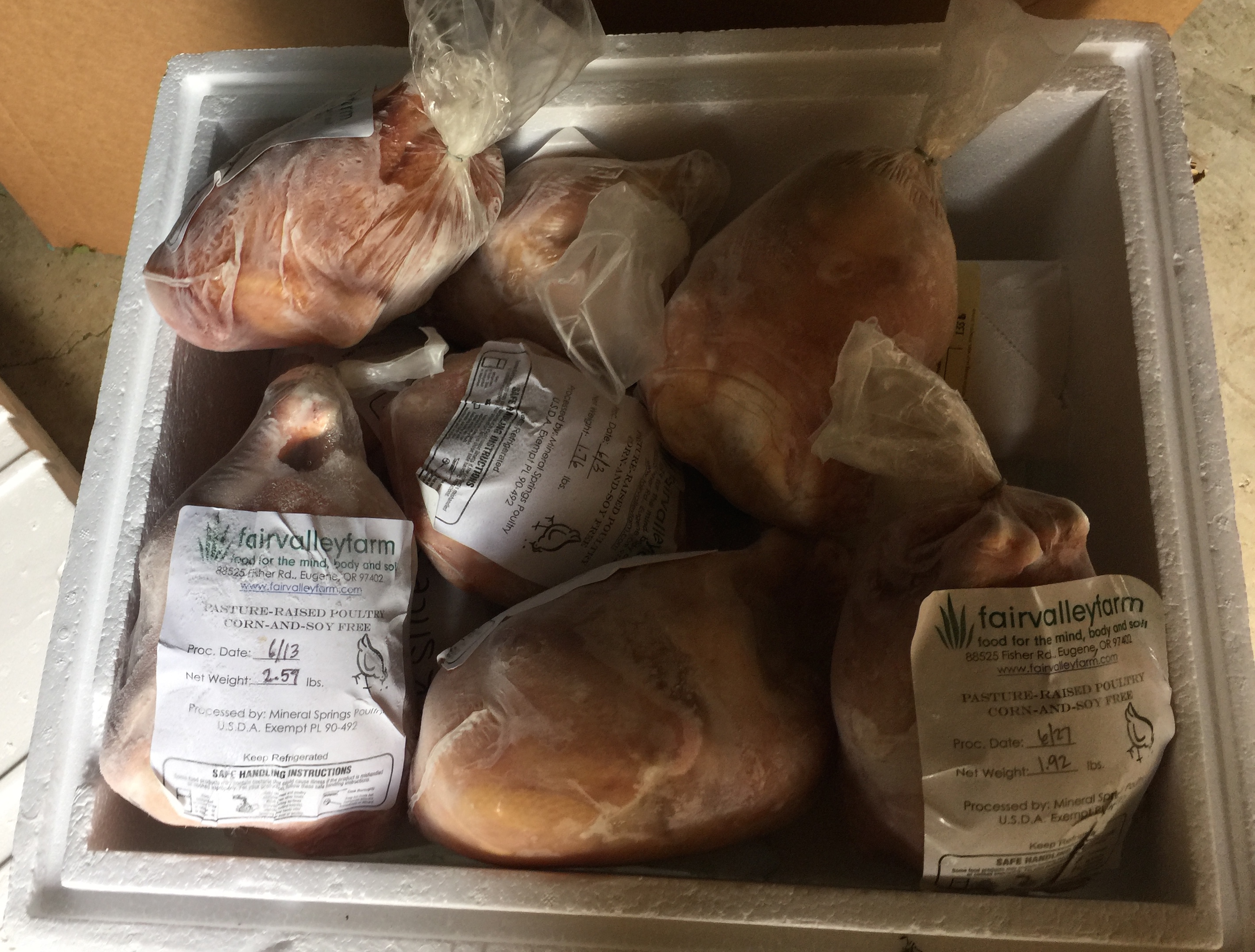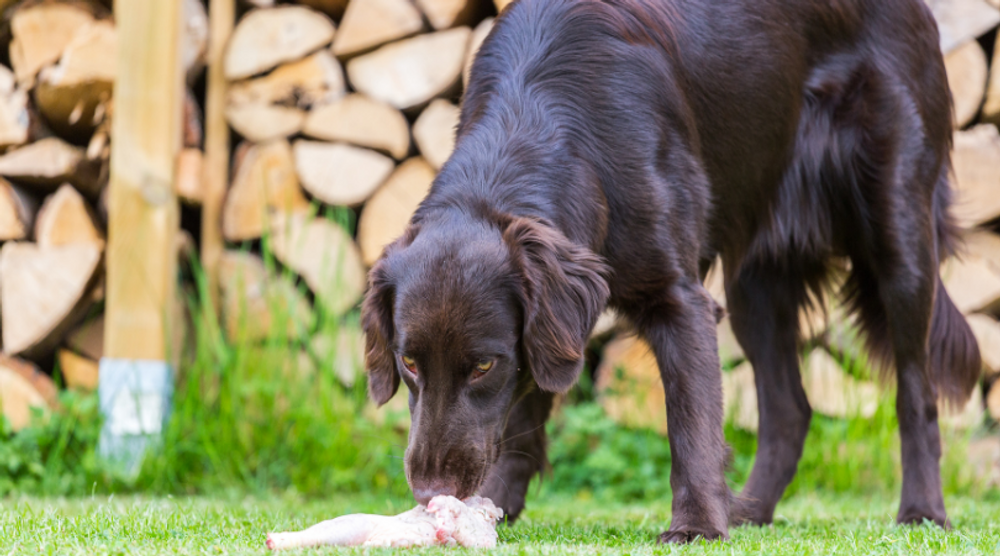Raw Diet For Dogs - When Is It Safe?
Posted by Rhonda Jewel on Feb 02, 2018
The AVMA, the leaders of the veterinary industry in this country, have been clear on their stance regarding raw meat diets for cats and dogs for many years.
What they would like us to believe is that raw feeding is dangerous and unhealthy for our pets – too many risks.
Yet, many of us raw feeders who have been feeding our dogs raw meaty bones, including chicken necks for many years, can attest to the fact that 'raw' is by far the best way to feed your dog or cat!
FEEDING A SPECIES-APPROPRIATE RAW MEAT DIET TO OUR CARNIVORE PETS IS INDEED HEALTHY AND THE CUTTING EDGE WAY TO A VITAL, LONG LIVED DOG OR CAT WITH FEW MEDICAL ISSUES.
The risks are no greater than any other method of feeding, with a whole lot more benefits. Most raw-fed dogs are thriving on it, with 'High Vibe', strong immune systems, luxurious coats with sparkling, clean teeth and fresh breath.
Since the raw food pet industry is growing by leaps and bounds right now, It appears the anti-raw group of allopathic veterinarians, are getting more pro-active on social media sharing their “scientific” belief in regards to how bad raw feeding can be for our (carnivore) pets. Of course their practices depend on sick animals.
An article was posted Feb 1, 2018 from the University of Melbourne, about how the bacteria campylobacter that may be found in chicken necks can possibly be a trigger for paralysis in APN patients, which is the canine counterpart of Guillain-Barré syndrome (GBS). However, if read carefully, Dr Nerissa Hannink, the author of the article, is actually saying that if your dog already has this disease, which is a rare but very debilitating condition, then eating raw chicken necks might trigger a reaction causing paralysis. ( My guess is this study was not conducted with raw fed dogs, probably with immune compromised, or kibble fed dogs given raw chicken necks.)
Personally, I think this type of article, as in the one from the University of Melbourne, and others like it are promoted to keep the veterinary industry benefactors happy, a few of which are the manufacturers of Science Diet, Royal Canin and other common kibbles. These are the recommended pet foods that are sponsored and sold through most conventional veterinary clinics. Many of these so-called “prescription” diets are a huge cash cow for their practices.
The Veterinary Association is working hard to make sure that the food we feed our dogs does not contain any unsafe bacteria, warning us about raw feeding our pets. While they think this information is credible, it simple overlooks the fact that those same risky pathogens can be found in those identical kibbles they market for pets. Moreover, hygiene starts in the home and if good habits are followed, the pet’s immune system will be strong and bacteria will not have a chance to multiply or thrive.
As a matter of fact these same bacteria such as campylobacter and salmonella are commonly found in kibble and actually are all around us and in all sorts of food that we regularly prepare for our human families – not only raw chicken but also can be found in eggs, milk, cheese, fish and pork and many other common fruits and vegetables as well.
These bacteria can not only propagate in kibble and meat but in vegetation, soil and water. They can grow in people and our pets as well. Bacteria are everywhere. There are more bacterial cells in the human body than human cells. Most bacteria are not harmful and in fact many are beneficial. However, some, we call pathogenic, can cause disease in certain situations. When handling meat it is always important to use good sanitizing practices. (I always have a bottle of colloidal silver handy at my meat cutting work station.) Some people like to use disposable gloves.
It’s common knowledge that all raw meat is probably going to contain some sort of questionable bacteria; meat is by no means sterile.
Even top grade USDA-inspected meat for human consumption is not free of bacterial contamination. Bacteria can be found almost everywhere, and campylobacter is typically very widely spread in the environment.
Dogs on raw tend to have a good immune system and very low pH in the gut so usually these types of bacteria don't bother them at all. Unless you are you feeding any sort of kibble with it which can raise the pH of the stomach acid, thereby weakening its natural protective power.
Let’s set this debate straight with just 2 major points regarding why and when raw feeding chicken necks, or any raw meat is safe.

Number #1
Food safety authorities have said that freezing chickens could vastly reduce the chances of bacteria being a problem. Frozen chickens campylobacter cells numbers were reduced by 90%. In other words, chances of passing any infection on was at about 10% at the very most. This is close to the same risk there is in handling any store brand kibble dog food with bare hands on a regular basis.
This information about the risk and danger of raw feeding and the possible harm to your pet (or more accurately misinformation) all comes back to the bottom line truth in raw feeding.
Number #2
It is all about the flora and fauna of the gastric ecosystem of the dog and cat.
The stomach acidity, the gastric pH of your carnivore pet eating a diet of raw meat is very low, extremely acidic, with a pH of 1-2 - Just imagine battery acid! A dog’s stomach pH can turn bone into a slurry in less then 20 minutes
This highly acidic gut and digestion system is completely designed by nature to be able to breakdown raw bones and muscle meats into a palatable digestible material.
This low pH is also the perfect environment to kill harmful bacteria on the spot! Specifically those same bacteria like campylobacter and E Coli. Also disarming and eliminating other pathogens like salmonella and clostridia.
Our carnivore pets have a drastically different gastric physiology and internal make up which allows them able to defend against pathogens way differently than us humans. Which proves, by anatomy alone that dogs and cats are totally intended to eat raw meat.
It is an interesting fact that dogs in particular are remarkably well appointed to deal with bacteria.
Your dog’s saliva contains lysozyme, an enzyme that destroys harmful bacteria making their mouth antibacterial. Their digestive tract is short as if it was created for quickly getting the food to the gut where the low pH is rapidly melting it all down. This fast action of getting the food down the gullet doesn’t give the bacteria time to grow and multiply. This super-acidic gut is a total bacteria colonization destroyer.
Since your carnivores gut is designed for rapid transit of meat, which doesn’t give the bacteria time to get in their system to do any damage, you are pretty safe to assume your dog or cat is not going to “catch” any disease from a raw diet.
However, if you were feeding kibbles/mixers, grain-based treats, adding in vegetables or starches at the same time, it slows their digestion time down, hence the bacteria might be able to have time to multiply.
So yes, the bacteria in raw meat or kibble might hurt your dog IF the dog is not raw fed on a consistent basis and is eating starches and veggies with the raw, or is already immune-compromised or has some other underlying health concerns that need attention.
So the bottom line is that campylobacter can occasionally cause illness in our pets, however, it is very commonly found as part of the normal flora of healthy animals.
( Quote from Nick Thompson - https://rawdogfood.co.uk/nick-thompson-interview/ )
“Another concern for vets is campylobacter infections, how would you respond to them?
If the food has been frozen, that will dramatically reduce campylobacter, it needs at least two weeks at -18°C.
The thing is, campylobacter is present in a lot of normal dogs so if you’ve got a dog who’s got diarrhoea and the diagnosis comes out with campylobacter, is it a pathological campylobacter and is it that which caused the diarrhoea or is it to do with food intolerance or something like that.
I think that the campylobacter picture is somewhat confused and there are a lot of puppy diarrhoeas which are blamed on campylobacter, which may not be campylobacter.”
References
Myths About Raw: Will the Bacteria in Raw Meat Hurt My Dog?, rawfed.com/myths/bacteria.html.
“10 Health Problems Caused by Using The Wrong Dog Food.” IHeartDogs.com, iheartdogs.com/10-health-problems-caused-by-using-the-wrong-dog-food/.
“Digesting Bones, Gastric Acidity, Salmonella in Dogs and Cats.” Vets All Natural, www.vetsallnatural.com.au/digesting-bones-gastric...
Dr Nerissa Hannink, University of Melbourne. “Raw Chicken Linked to Paralysis in Dogs.” Pursuit, The University of Melbourne, 1 Feb. 2018, pursuit.unimelb.edu.au/articles/raw-chicken-linked-to-paralysis-in-dogs.“Is Raw Dog Food Safe for Dogs?!” Dogs First, www.dogsfirst.ie/raw-faq/is-raw-meat-good-for-dogs/.
Elliott, MRCVS Pippa, and wikiHow. “How to Treat Campylobacteriosis in Dogs.” WikiHow, WikiHow, 30 Sept. 2017, www.wikihow.com/Treat-Campylobacteriosis-in-Dogs.

